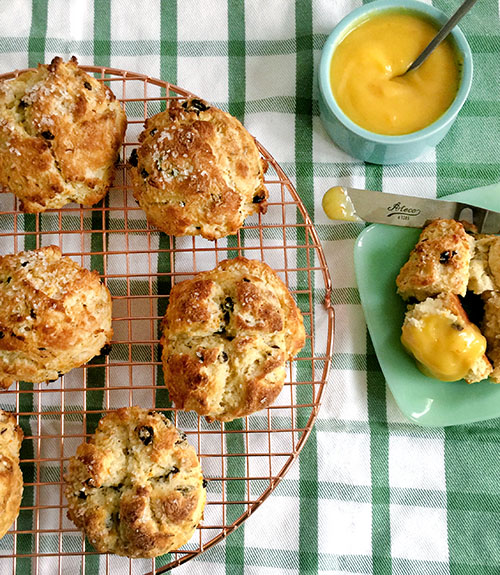
Whoa, where do all the hours, flours, butter and keyboard strokes go? As of this writing, A Woman Sconed is now conjuring her 200th post! Why, just the other day, it was my 186th!
I am delighted with disbelief at this “mile-scone,†and, to be honest, when I saw it on the horizon (I number each post for my “recordsâ€), I knew this blog entry must be, of course, about scones.
With St. Patrick’s Day approaching, what could be more appropriate than a hybrid of scones and Irish soda bread? These creatures do exist. Even in Irish traditions, a cÃstÃn beag was a mini soda bread fashioned by children made with part of the dough for the larger loaf their mother was making, according to Darina Allen in her book “Irish Traditional Cooking,†(1995). And there are recipes out there…I found — and played with — a delightful Irish Soda Scone recipe from Martha Stewart.
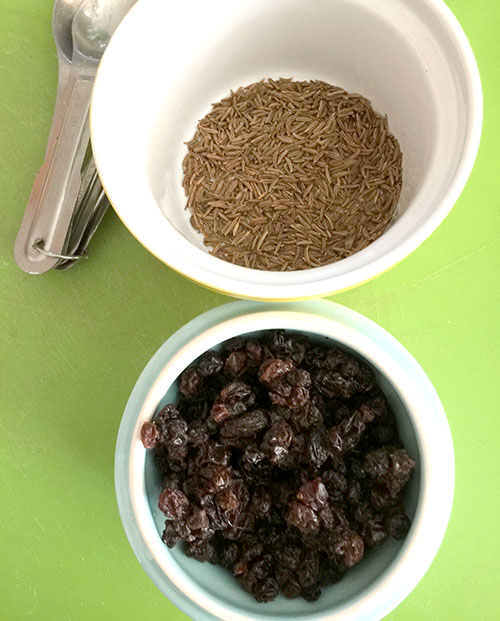
[T]his recipe is especially appealing in that it is a scoop-and-drop scone, so no need for kneading, a floured board, cutting the scones, etc. A simple butter-and-buttermilk infused formula, it also carries with it a couple of unique ingredients often found in sweeter soda breads — dried currants and caraway seeds, which are also used in a number of recipes for cakes in Irish cookbooks.
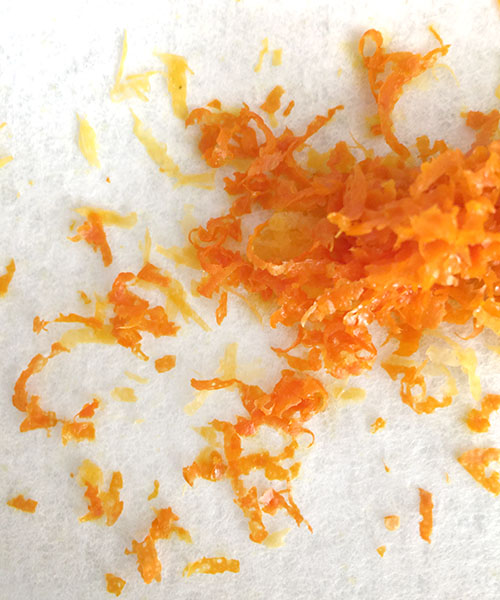
[I]t also calls for a glaze made with confectioner’s sugar and orange zest…I really didn’t want any icing on this scone, so I decided to add the zest (increasing the amount) to the scone dough, then carry the orange flavor further by making ORANGE CURD as a topping for the scones! Oh yes…
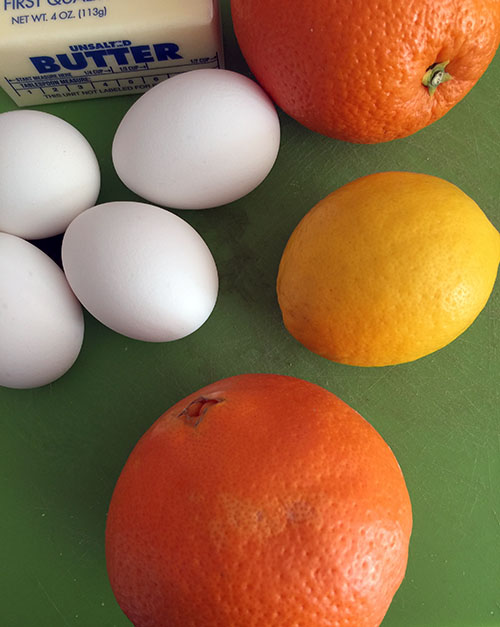
[I] had considered making a rhubarb curd (and still may do that when rhubarb becomes more prevalent in the markets), but my friend Anna had given me some beautiful oranges, and with the orange flavor in the scones, fate determined my curd. So easy to make, everyone should try to make a lemon or citrus curd at some point.
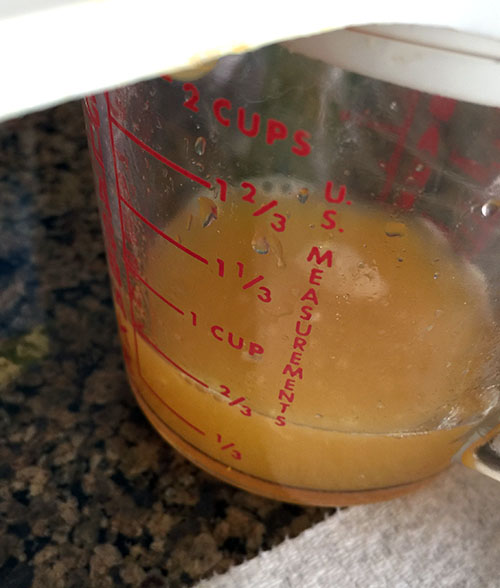
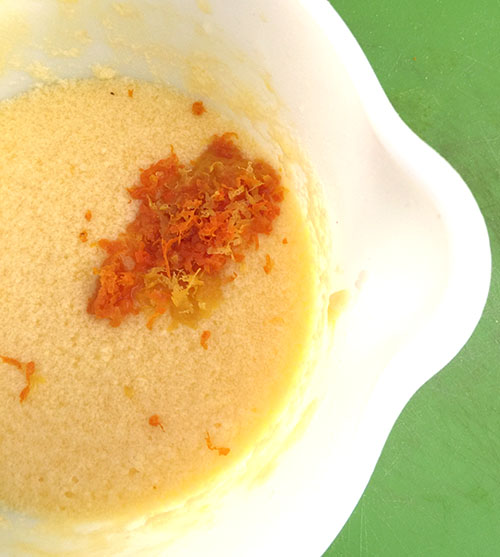
[I] love Southern Living’s method of blending all the ingredients (sugar, softened butter, eggs, zest and juice) before cooking, then throwing it all in the pot, cooking and whisking until…
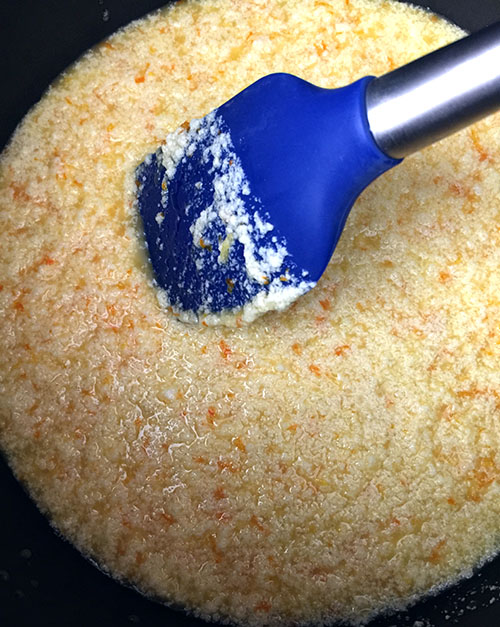
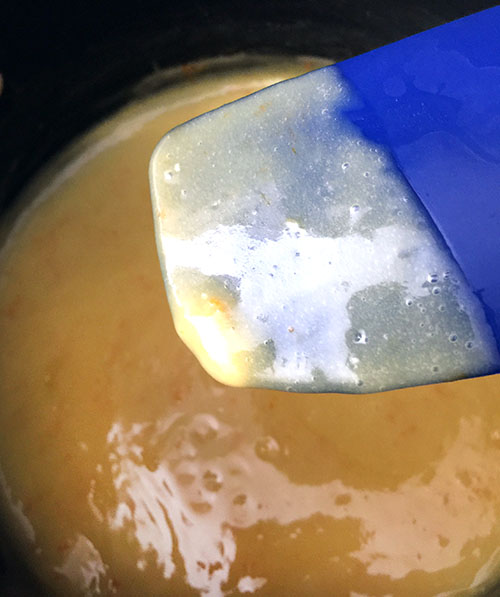
[O]ne has a thick, nearly pudding-like consistency that will coat the back of the spoon. The curd is ready (minus chilling time) in less than 15 minutes.
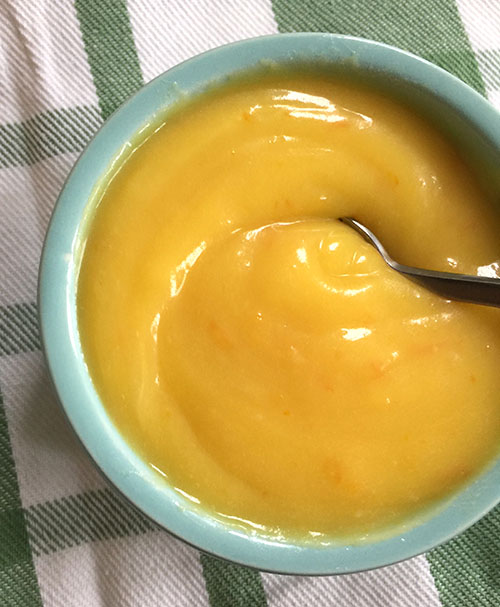
[T]he curd turned out a beautiful golden orange (I had included some Meyer lemon because I had some and the more tart element would bring some zing to the orange). I put the curd in the fridge to chill while I contemplated my scones.
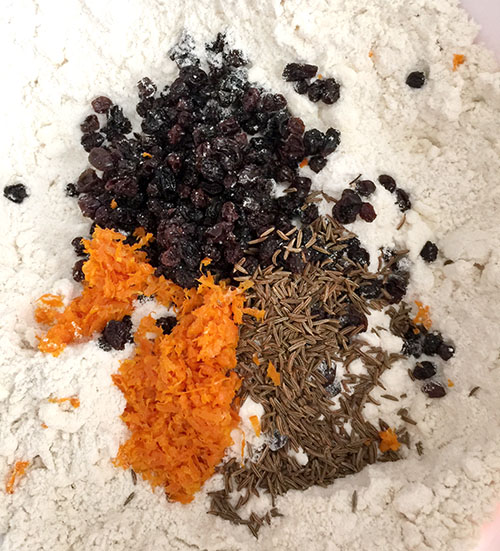
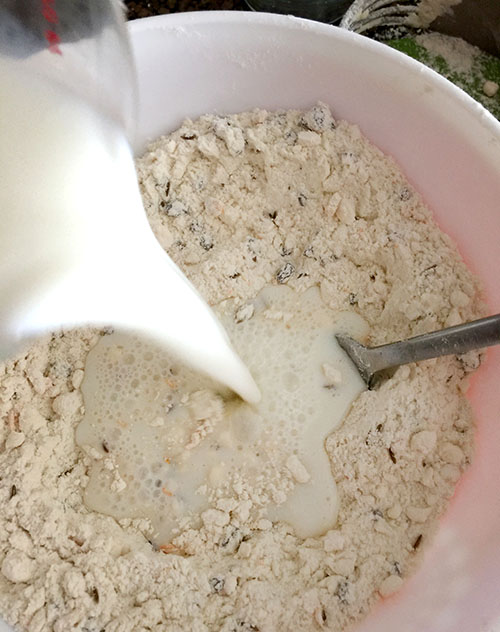
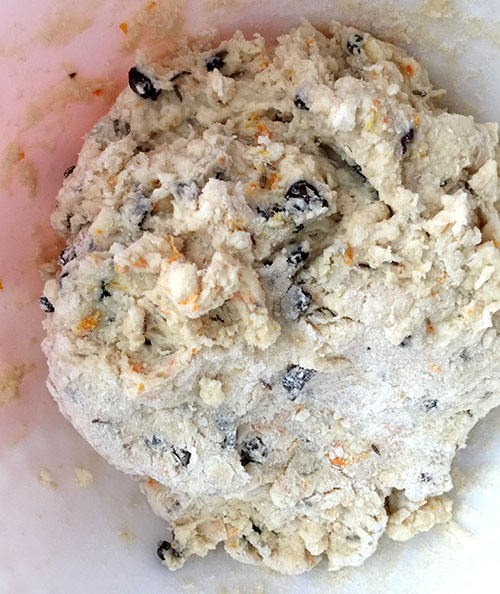
[T]he dough in this recipe, like many biscuit, scone or soda bread doughs, comes together quickly, in an assembling of dry ingredients, cutting in an ample (1 stick) amount of butter, tossing in zest, currants and caraway seeds (the seeds do have a sour, distinct taste, so if that is not your thing, you can reduce or eliminate them from the recipe) and work in a cup of cold buttermilk just until it forms a soft dough.
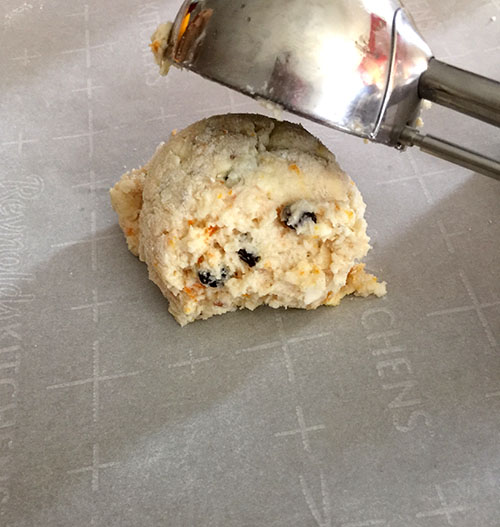
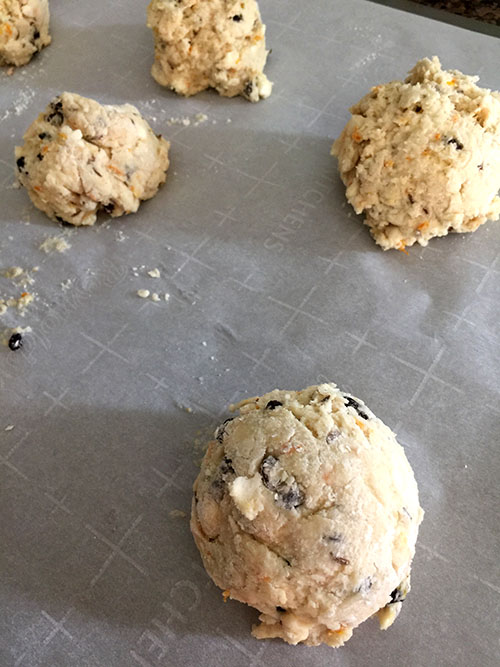
[I] was impressed with the ease of scooping this dough, which actually yielded the exact amount of 8 scones (I love it when that happens). They were beautiful mounds of scone, but here I considered doing something that could risk the structure of their end result.
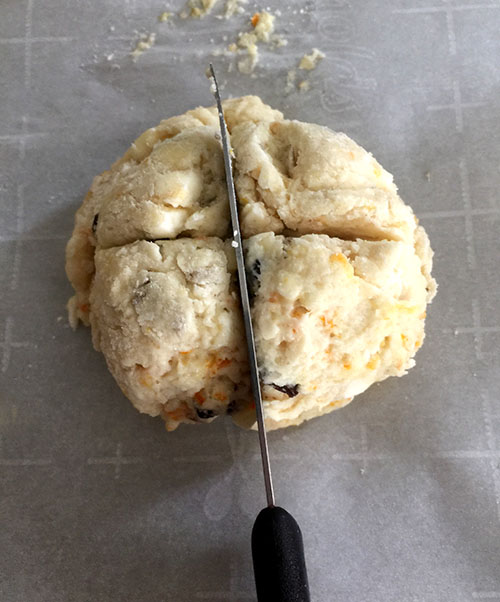
[T]raditional soda bread has a cross cut in the dough prior to baking. While this recipe did not instruct that, I took a gamble and cut crosses in half the scones to see what would happen. The dough was sturdy and the crosses cut willingly…but without knowing how much the dough would rise or spread in the oven, it was possible the cross would not work. No risk, no reward, they say. I sprinkled some sparkling sanding sugar over all the scones as a crunchy/sweet finish.
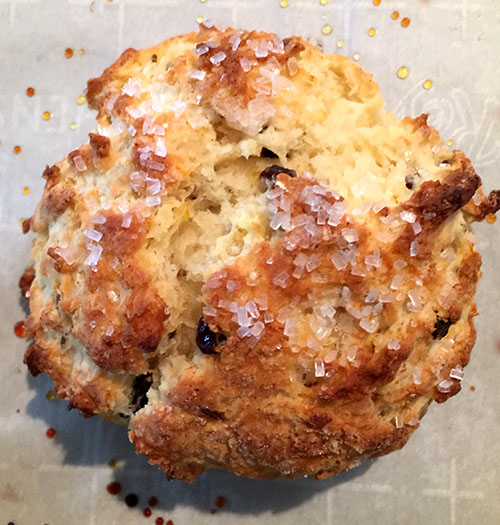
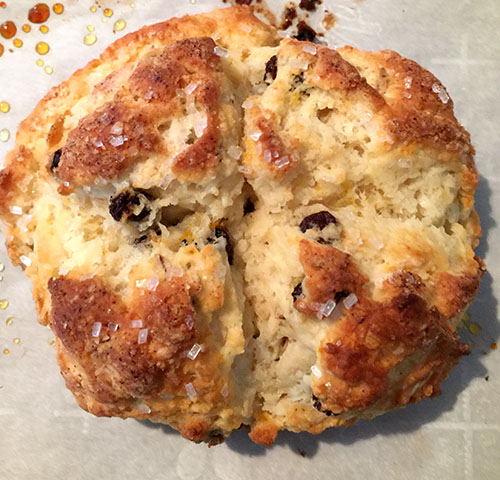
[I] was pleased with both the crossed and uncrossed scones after baking. The ones with the cross cut were slightly flatter, but no less lovely than their more rounded counterparts.
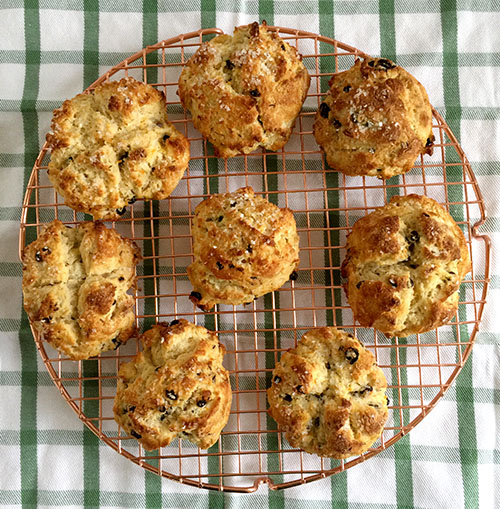
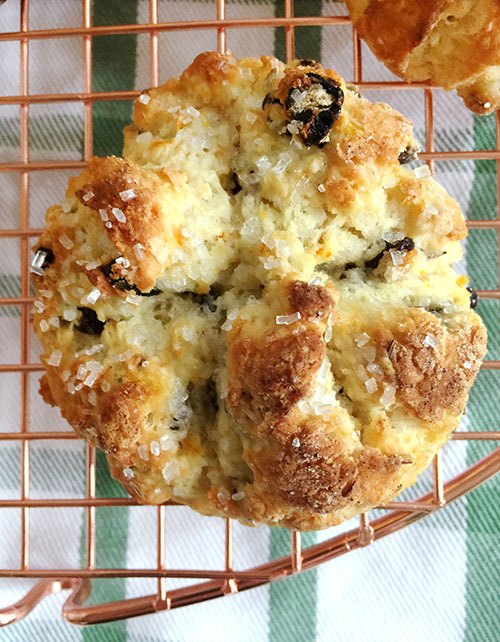
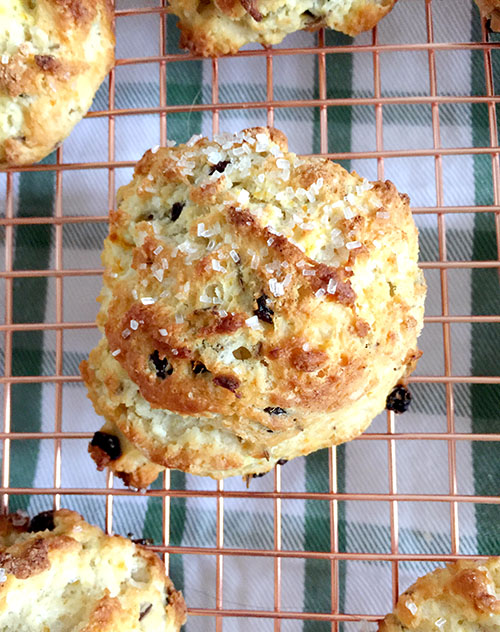
[T]he scones were perfectly delicious — crunchy, golden exterior yielding to a bite of buttery plumpness, enhanced with sweet currants and a hint of caraway (despite 2 teaspoons of the seeds, their flavor was not overwhelming). I lathered on a little of the orange curd, which dripped on my fingers as I ate, and a smattering of the soft citrus atop the scone was a perfect match. Outside, it was the kind of drizzling day ideal for baking, and I ate in silence by myself, in my floured red apron with one pocket weighted by the iPhone that captures all the pictures in this, as well as the other couple hundred processes save one — me eating, reflecting, celebrating.
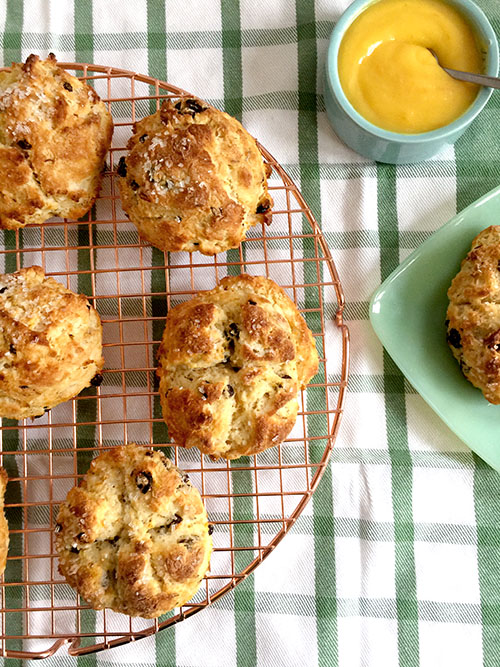
Irish Soda Scones
Adapted from www.marthastewart.com
Makes 8 scones
- 2 cups unbleached all-purpose flour
- 2 teaspoons baking powder
- 1/4 teaspoon baking soda
- 1/4 cup granulated sugar
- 1/2 teaspoon kosher salt
- 1 stick cold unsalted butter
- 1/2 cup dried currants
- 2 teaspoons caraway seeds
- 2 teaspoons orange zest
- 1 cup cold buttermilk
- Sparkling sugar (optional)
Preheat oven to 425 degrees. Whisk together flour, baking powder,
baking soda, granulated sugar, and salt.
Cut butter into small pieces; work into flour mixture with your fingers
or a pastry cutter until dough resembles coarse meal. Add currants,
caraway seeds and zest, then buttermilk; stir until just combined.
Scoop 1/3 cup-size mounds of dough onto a parchment-lined baking
sheet, spaced 3 inches apart. Sprinkle on sparkling sugar, if desired.
Bake until bottoms are golden, 15 to 20 minutes. Let cool completely
on sheet.
Orange Curd
Makes 1 cup
- 1/4 cup salted butter, softened
- 1 cup sugar
- 2 eggs
- 1 egg yolk
- 1/2 cup fresh orange juice (or a combination of orange and lemon)
- 2 teaspoons orange zest (or a combination of orange and lemon)
Beat butter and sugar in a medium bowl with an electric mixer until
well-blended (about a minute). Add eggs and egg yolk one at a time,
beating until just blended after each addition. Slowly add orange
juice, beating on low speed until blended. Stir in zest.
Pour mixture into a heavy saucepan and cook over medium-low,
whisking constantly, until mixture thickens and coats the back of a
spoon (this should take 12 to 14 minutes).
Pour into a bowl and place a layer of plastic wrap on top to prevent a
skin from forming. Chill at least 2 hours.
.